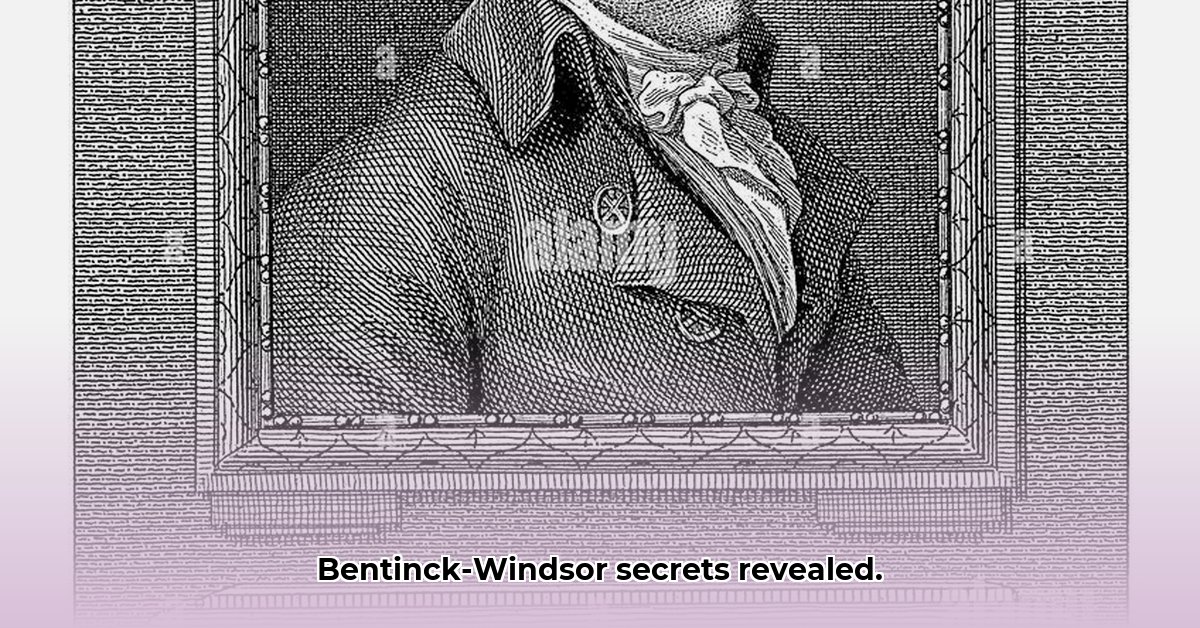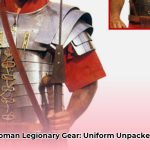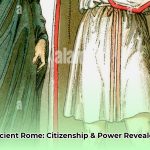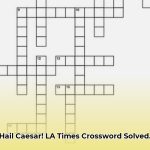Ever wondered about the hidden connections between seemingly disparate families? Prepare to be amazed by the tangled web of history linking the Bentincks and the Windsors. Learn more about the prominent Bentinck family here. We’re going on a genealogical adventure, exploring the challenges of tracing these powerful lineages. It’s a story filled with surprising twists, frustrating dead ends, and the occasional secret. We’ll uncover how these families connect, revealing both the similarities and differences in their stories. We’ll even spill the beans on the common mistakes people make when researching their family history and offer some tips to help you avoid those pitfalls. Get ready for a fascinating journey through time – one that’ll make you appreciate the challenges and triumphs of piecing together the past.
A Tale of Two Families: Bentinck and Windsor
Tracing the family trees of the Bentincks and the Windsors isn’t just about dusty old documents and complicated charts; it’s a real-life detective story spanning centuries, revealing fascinating glimpses into European history and the messy, unpredictable nature of life among the elite. Both families have left their mark on the world, but their journeys to prominence and the challenges of uncovering their pasts offer a compelling comparison. Discover how discrepancies can reveal fascinating insights!
Bentinck and Windsor: Charting Different Courses
The Bentinck family story begins in the Netherlands, a nation known for its seafaring prowess and resilience. They rose to power through a blend of military success and shrewd political maneuvering; think of them as the ultimate power players in 17th and 18th century Europe. Their influence spread, touching the courts of both the Netherlands and Great Britain. Their history is interwoven with the rise and fall of empires, mirroring the shifting tides of European power. Key figures like William Bentinck, 1st Earl of Portland, played pivotal roles in shaping Anglo-Dutch relations.
The Windsors, on the other hand, have a distinctly royal narrative. Their story is one of royal ascension, a climb to the top of the British throne. While their roots trace back to Germany (originally the House of Saxe-Coburg and Gotha), their true story is inextricably linked to the British monarchy, reflecting its evolution and enduring strength. Their history is one of adapting to change while maintaining tradition, a delicate balancing act that any royal family must master. The reign of Queen Victoria, and the subsequent shift to the House of Windsor under George V during World War I, underscores this careful dance between heritage and modernity.
The Genealogical Maze: Challenges in Unraveling the Past
Tracing the histories of any family across hundreds of years presents challenges. For both the Bentincks and the Windsors, this is especially true. Imagine trying to keep accurate records for generations, with wars, revolutions, and simple human error muddying the waters. Records can be incomplete, inconsistent, or even deliberately altered, creating a frustrating maze for researchers. Can variations and deliberate attempts at altering records create discrepancies for researchers?
Variations in record-keeping methods over the centuries, deliberate attempts to hide certain aspects of family history (think illegitimate children or political scandals), and the simple fact that people make mistakes when writing (or transcribing) information all contribute to frustrating discrepancies. Birth dates might differ between sources, locations are hazy, and sometimes, even family relationships are up for debate! How much of genealogical research rests on educated guesses? The further back in time one goes, the more fragmented and unreliable records become.
Genealogists tackle this challenge with detective work, requiring meticulous research and cross-referencing various primary sources – wills, birth records, letters, estate records, anything that offers a clue. Each document must be evaluated within its historical and social context, weighing its credibility and potential biases. Collaboration amongst researchers is also crucial; a fresh pair of eyes can often spot inconsistencies that others might miss. Furthermore, advancements in DNA testing have added another layer to genealogical research, helping to confirm or refute connections suggested by historical records. It’s a testament to the dedication of individuals who are passionate about history, meticulously piecing together fragmented lives and relationships.
Bentinck vs. Windsor: A Comparative Overview
Let’s compare these families side-by-side to see their striking similarities and fascinating differences. Keep in mind, even this table represents our best understanding based on available evidence – ongoing research may change some of these details.
| Feature | Bentinck Family | Windsor Family |
|---|---|---|
| Origin | Netherlands | Germany (originally Saxe-Coburg and Gotha) |
| Rise to Prominence | Military & political influence; aristocratic connections | Royal succession; strategic marriages; national identity |
| Key Historical Periods | 17th-20th centuries; strong presence during Dutch Golden Age and in Britain | Primarily 20th-21st centuries; closely tied to British history |
| Genealogical Challenges | Scattered records across multiple European archives; differing record-keeping practices over the centuries; language barriers | Relatively centralized record-keeping, but still incomplete and prone to errors; sensitivities around royal privacy; some records may be intentionally obscured |
| Notable Intermarriages | Extensive ties to European nobility; strategic alliances; connections to other powerful merchant families | Significant intermarriages among European royal families; political alliances; strategic unions to secure the throne |
| Current Status | Remains a prominent family; lineage is well-documented, though still incomplete | Reigning Royal Family of the United Kingdom |
| Typical Records Used | Dutch land records, British peerage records, family letters, wills, and testaments | Royal archives, parish registers, official biographies, peerage records |
The Broader Picture: A Human Perspective
The comparison between the Bentinck and Windsor lineages provides a fascinating insight into the complexities of genealogy. More than just a list of names and dates, it highlights the human drama that underlines historical research. It’s a story of triumphs and challenges – of preserving family legacies across centuries, despite the obstacles thrown in their path. The uncertainties inherent in genealogical research should not be seen as shortcomings but as reminders of the fascinating and ever-evolving nature of history itself. The more we dig, the more we realize how many pieces of the puzzle remain to be discovered, revealing a richer and more multi-faceted picture of these two truly remarkable families. The quest to piece together their stories is a journey that continues to this day and holds promise for future discoveries.
Advanced Data Analysis Techniques: Reconciling Conflicting Genealogical Records
Key Takeaways:
- Discrepancies in genealogical records are common, arising from various sources, including transcription errors and evolving naming conventions.
- Primary sources, created closest to the event, are generally more reliable than secondary sources. However, even primary sources require careful evaluation for bias and accuracy.
- Reconciling conflicting genealogical records involves systematic comparison of multiple sources, considering context and potential biases.
- Advanced data analysis techniques can help identify patterns and relationships within large datasets of genealogical information, facilitating effective reconciliation of conflicting records.
- Transparency in documenting the research process, including decisions made regarding conflicting information, is critical for maintaining research integrity and fostering collaboration.
Lines Entwined: Bentinck, Windsor, and Genealogical Discrepancies
The story begins with a whisper – a missing will, a disputed birthdate. These seemingly minor inconsistencies, common in genealogical research, become significant challenges when dealing with prestigious lineages like the Bentincks and Windsors. How do we navigate the maze of conflicting accounts, ensuring accuracy in charting their interwoven histories? The answer lies in sophisticated techniques, including advanced data analysis, that pinpoint and resolve discrepancies. Could something as small as a missing will derail centuries of history? Understanding the nuances of record-keeping practices, social customs, and even political motivations is key.
Separate Histories, Intertwined Challenges
The Bentincks, a Dutch noble family, boast a rich history rooted in centuries of political influence and strategic intermarriage. Their records, meticulously preserved in archives across Europe, are nonetheless not without inconsistencies, stemming from varying national standards for documentation and the inherent limitations of handwritten records. The Windsors, the British Royal family, present a comparable challenge, with centuries of royal documentation, royal privilege, and political maneuvering that has, at times, obscured or intentionally obfuscated accurate record-keeping in their history. Does royal privilege complicate accurate record keeping? Issues such as name changes, the deliberate withholding of information related to illegitimate children, and politically motivated alterations of records further complicate the process.
Comparing and Contrasting Lineages
Both lineages offer a fascinating case study in reconciling conflicting genealogical records using advanced data analysis techniques. For example, conflicting accounts of birthdates, frequently encountered in both families’ records, can sometimes be resolved by cross-referencing multiple sources, such as baptismal records, census returns, and family Bibles. The use of sophisticated indexing and matching algorithms in genealogical software aids in detecting and resolving such irregularities. Furthermore, probabilistic record linkage, a statistical method, can be used to assess the probability that two or more records refer to the same individual, even if the information they contain is not identical.
| Feature | Bentinck Lineage | Windsor Lineage | Reconciliation Method |
|---|---|---|---|
| Record Keeping | Primarily meticulous, but some gaps exist. | Extensive, but prone to omissions and biases. | Cross-referencing primary sources (e.g., parish records, wills) with secondary sources (biographies, historical accounts); employing probabilistic record linkage to assess record similarity |
| Naming Conventions | Relatively consistent, though variations |










